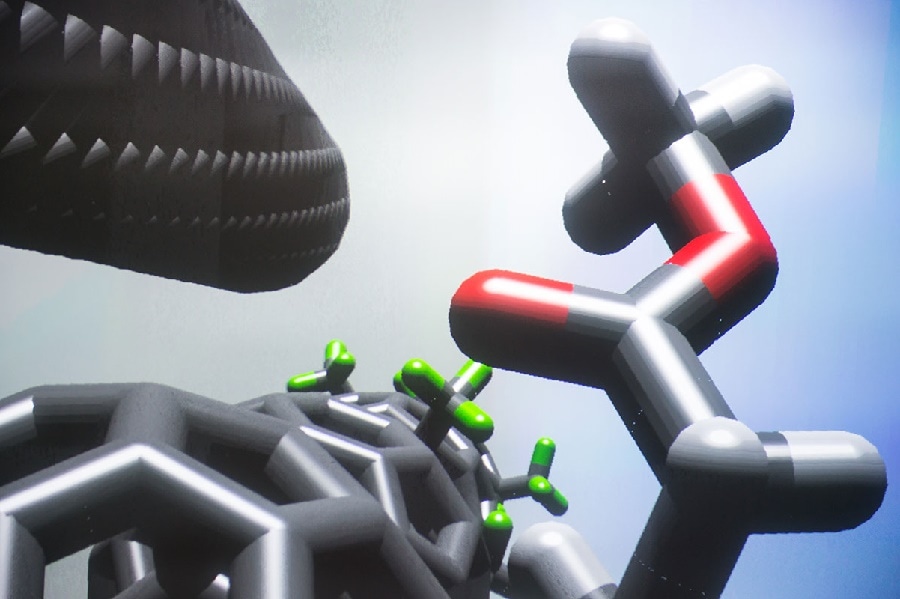A team of researchers at the Energy Department's National Renewable Energy Laboratory (NREL) recently identified that single-walled carbon nanotube semiconductors can be beneficial for photovoltaic systems because the semiconductors are capable of transforming sunlight to electricity or fuels without losing a lot of energy.
 (Credit: National Renewable Energy Laboratory)
(Credit: National Renewable Energy Laboratory)
The research is based on the Nobel Prize-winning work of Rudolph Marcus, who invented a basic tenet of physical chemistry that describes the rate at which an electron can travel from one chemical to another. However, the Marcus formulation has rarely been used to analyze photoinduced electron transfer for upcoming organic semiconductors like single-walled carbon nanotubes (SWCNT) capable of being used in organic PV devices.
After a photon is absorbed in organic PV devices, charges (holes and electrons) usually need to be segregated across an interface in order to have a prolonged life span that will enable collecting the charges as electrical current. The electron transfer event that develops these segregated charges is available with a potential energy loss because the molecules that are part of the process need to reorganize their bonds in a structural manner. This loss is known as reorganization energy, but the researchers discovered that a lot less energy was lost when SWCNT semiconductors were paired with fullerene molecules.
What we find in our study is this particular system -- nanotubes with fullerenes -- have an exceptionally low reorganization energy and the nanotubes themselves probably have very, very low reorganization energy. Tuning the driving force for exciton dissociation in single-walled carbon nanotube heterojunctions.
Jeffrey Blackburn, Senior Scientist, NREL
The paper has been published in the latest issue of Nature Chemistry. The co-authors of the paper are Rachelle Ihly, Kevin Mistry, Andrew Ferguson, Obadiah Reid, and Garry Rumbles from NREL, and Olga Boltalina, Tyler Clikeman, Bryon Larson, and Steven Strauss from Colorado State University.
Organic PV devices include an interface between a donor and an acceptor. In the case discussed here, the SWCNT is the donor as it provided an electron to the acceptor, which in this case is the fullerene. The researchers collaborated with colleagues at Colorado State University to use the expertise from each institution in developing donors and acceptors with energy levels that are highly tunable and well-defined. Fullerene acceptors were placed at CSU, and semiconducting SWCNT donors at NREL. This collaboration helped scientists from NREL to establish the fact that the electron transfer event occurred with less energy loss related to reorganization, highlighting the fact that it is possible to harvest solar energy in a more efficient manner. For this reason, SWCNT semiconductors are considered to be beneficial for PV applications.
The research was funded by Energy Department's Office of Science.
NREL is the U.S. Department of Energy's primary national laboratory for energy efficiency and renewable energy research and development. The Alliance for Sustainable Energy, LLC operates NREL for the Energy Department.